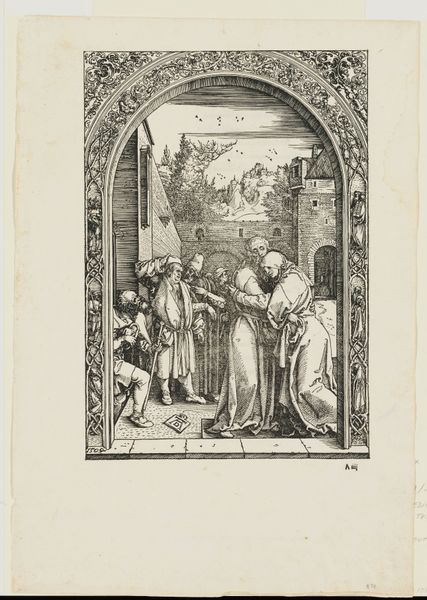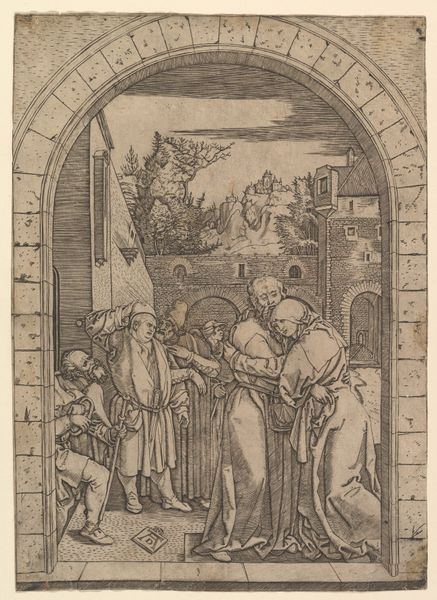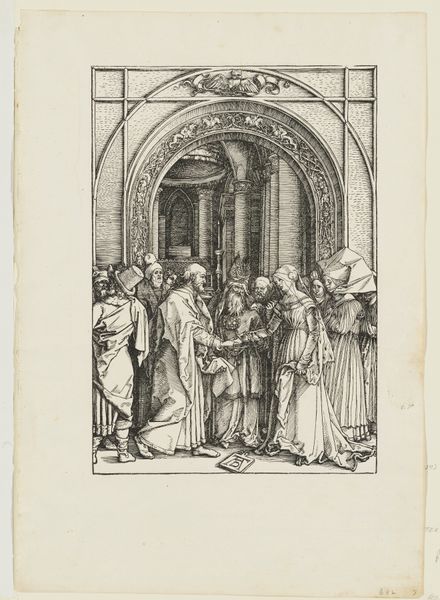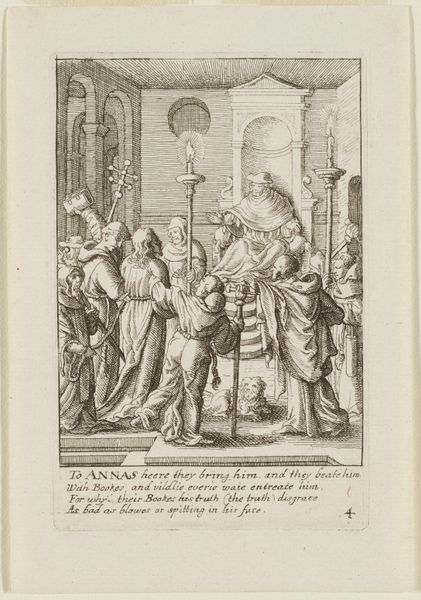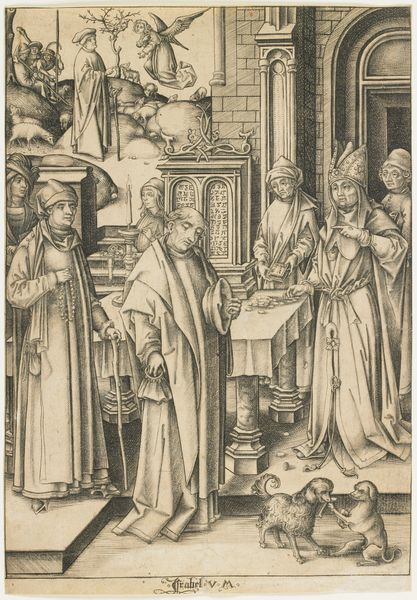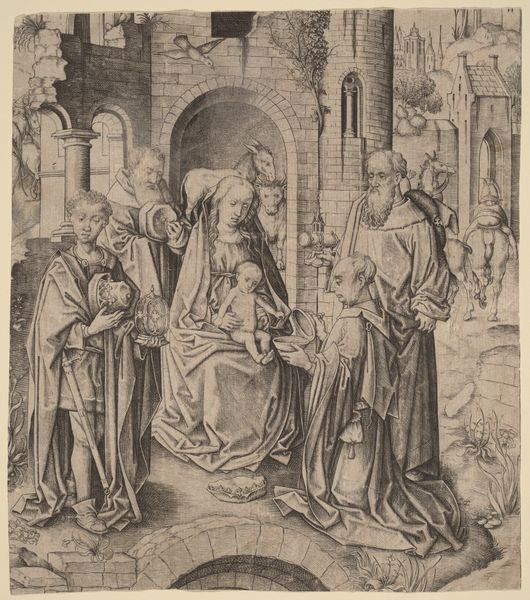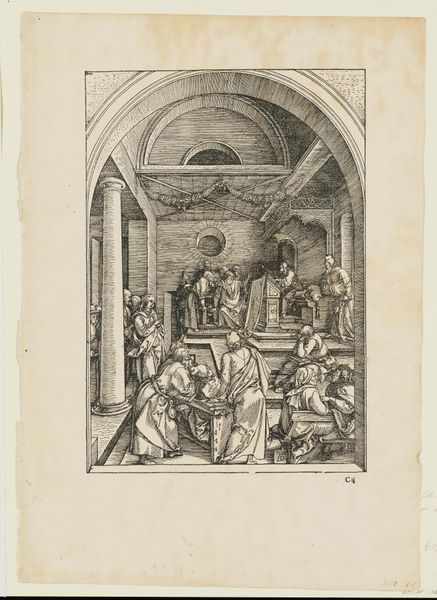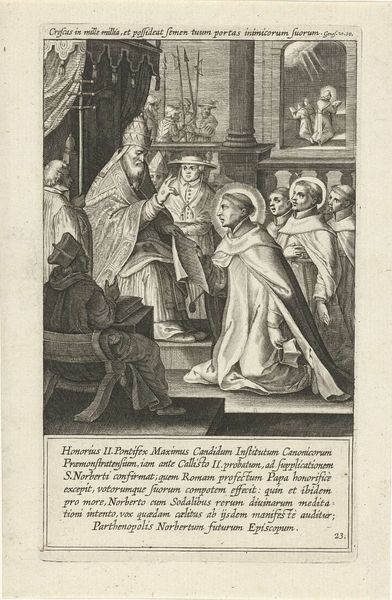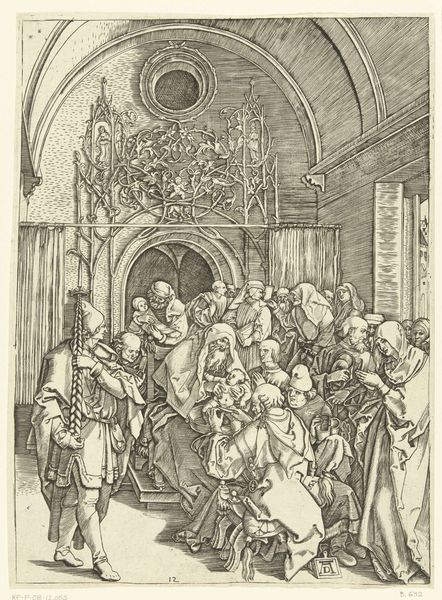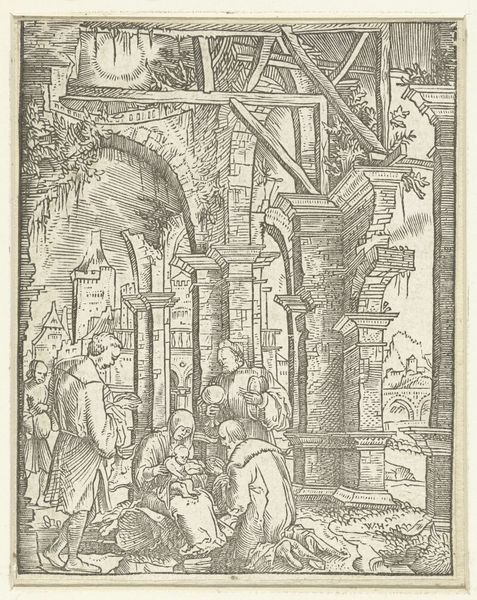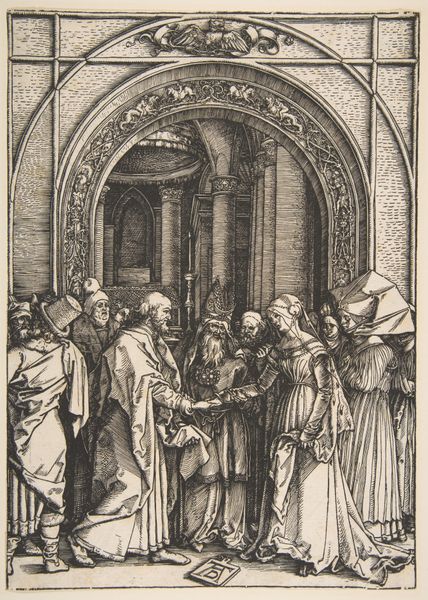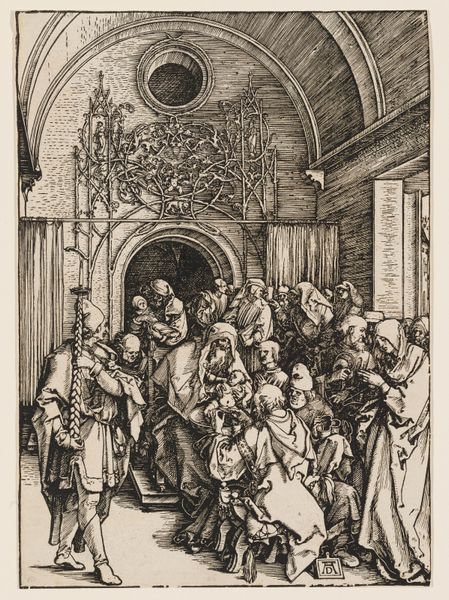
print, woodcut
#
narrative-art
# print
#
figuration
#
woodcut
#
line
#
northern-renaissance
Dimensions: 329 mm (height) x 245 mm (width) (bladmaal)
Curator: Here, we have Albrecht Dürer's woodcut print, "Joachim and St. Ann meet at the Golden Gate," created in 1504. What are your immediate thoughts? Editor: My initial impression is the incredible detail achieved with the woodcut technique. The texture of the clothing, the expressions of the figures, and the landscape visible through the gate – all rendered with such precise lines. The scene feels crowded and joyous. Curator: Indeed. Dürer masterfully uses line to define form and space. Considering the subject, this meeting carries profound symbolic weight. Joachim and Ann were barren for many years, and their embrace at the Golden Gate signifies their miraculous reunion and God's blessing that would lead to the birth of Mary. This subverts cultural ideas of women's role to procreate. Editor: I’m also drawn to how Dürer conveys status through the depiction of garments. Notice how their clothing denotes wealth but, more importantly, dignity, reflecting the significance of this destined couple within the broader social fabric. The lines that suggest the textile materials are intricate, almost unbelievable to be rendered through this medium. Curator: Precisely. One should consider the politics of the period, the rise of Humanism, which profoundly influenced the arts, calling for a revival of classical learning and an emphasis on human experience. It offers a shift towards seeing people as valuable individuals with an important spiritual capacity, irrespective of social and gender roles. Editor: I think it's interesting to think about how Dürer democratizes the creation of devotional images, and making them accessible to a wider audience at the time via printmaking. Think about the sheer amount of labor involved in crafting the woodblock itself, then consider the reproducibility the print allows, and how this changes the social context of religious artmaking and art consumption. Curator: The northern Renaissance emphasis on realism intersects beautifully here with the theological significance, allowing viewers to relate to the figures not just as saints, but as humans experiencing joy and hope against the odds, mirroring personal hopes for divine intervention. Editor: Dürer really transforms what was a highly specialised artisanal method of creation and turns it into a powerful medium that has material implications and implications for devotion. He brings art to the masses. Curator: Absolutely. Dürer successfully integrates religious narrative with an emerging cultural sensibility. Editor: Indeed. Examining Dürer's print has illuminated the powerful intersection between material creation, belief, and cultural values.
Comments
No comments
Be the first to comment and join the conversation on the ultimate creative platform.
